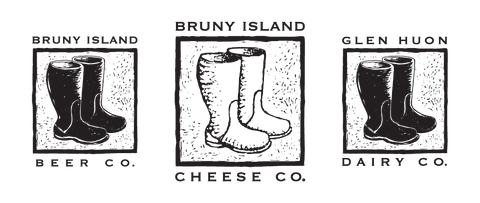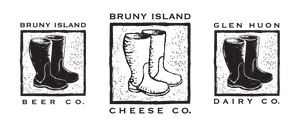Why is Raw Milk Cheese Important?
I want to talk about raw milk cheese and why I think it is so important.
Let me be clear right from the start – making raw milk cheese is the reason why we are cheesemakers. At Bruny Island Cheese, we strive to make great cheese which represents all the nuances and character of the unique place where we farm and make cheese. The ability to use unpasteurized milk is essential in achieving that goal.

Put simply, it is the purest expression of our craft.
The subject of raw milk and raw milk cheese has been a hot topic for as long as I have been making cheese. There are some very strong opinions (and often not a lot of fact) on both sides of the debate. It is symbolic of the divide that exists in many areas of our food production, namely the chasm of disconnect that often lies between producers, the media, chefs, scientists and you - the consumers.
But why does the issue of raw versus pasteurised milk cheese get people’s backs up so much?
To start with, I think this debate goes to the core of the tension much of society feels when our food gets manipulated. We feel like our autonomy is being threatened – we don’t like it when our ability to live the life we choose, make our own decisions and be guided by our own common sense is taken away from us.
Before we break it down to some of the arguments that surround this issue, let’s understand exactly what the terms ‘pasteurisation’ and ‘raw milk’ mean.
What is ‘Pasteurisation’?
Pasteurisation of milk is an excellent thing… when it is needed. For well over a century it has prevented disease and made milk a globally important source of food.
Pasteurisation was first employed in 1862 by, as the name suggests, Louis Pasteur, as a way of keeping wine and beer from souring. It was not until 1886 that the same technique was applied to milk, making it reliably safe to drink as well. This was important because after the industrial revolution the world became rapidly urbanized. The time it took to get milk from the country areas to the city markets was getting longer, and the milk was spoiling before being consumed. Pre-industrialisation, it was not such an issue because, even in urban areas, house cows were extremely common.
Pasteurisation is the name given to the heat treatment of milk (and other liquid foods such as juice, egg and beer) to destroy pathogenic bacteria, which cause illness. Pasteurisation does not sterilise the milk, but it is indiscriminate, destroying most of the good bacteria along with all of the bad. The process depends on a combination of temperature and time. The typical standard in the dairy industry is 72°C for 15 seconds.
Pasteurisation and refrigeration are the reason milk now has a use-by date some 2-3 weeks after is has left the farm. Even when kept at less than 2°C, raw milk will start to deteriorate immediately and has a life of 4-8 days because of the naturally occurring bacteria. UHT milk has been heated to a minimum of 138°C for 2 seconds. This destroys all bacteria in the milk which is why it does not need to be refrigerated and has a ridiculous shelf life. It also denatures the proteins and caramelises the lactose (the natural sugar in milk), which is why it tastes so awful.
Diseases pasteurisation can prevent include tuberculosis, brucellosis, diphtheria, scarlet fever, and Q-fever; The pathogenic bacteria it kills are Salmonella, Listeria monocytogenes, Yersinia, Campylobacter, Staphylococcus aureus, and Escherichia coli.
What is ‘Raw Milk?

Put simply, raw milk is milk that has 100% of its natural microbiology intact. It has not been subjected to any process that destroys any of the diverse populations of naturally occurring bacteria.
Milk comes from udders, be they sheep, cow, goat, buffalo or any other mammal. The production of milk is what separates mammals from the rest of the animal kingdom. The bacteria in milk mostly belong to a group called ‘lactic acid bacteria,’ and their job is to consume the lactose (sugar) in milk and convert it to lactic acid. This does the important job of denaturing the protein in the milk and separates the milk solids from the liquid part, which allows the new baby calf/lamb etc to access the nutrient-rich part of milk.
But because of the design of udders and where they are found on the animal, the exterior of the udder is subject to contamination. That is where pathogenic bacteria can enter the milk supply.
There are many arguments for and against raw milk cheese. Here are some of the key questions that we get asked about raw milk cheese.
1. “Are raw milk cheeses safe?”
Because pasteurisation destroys pathogenic bacteria, it is the main reason countries like Australia have mandatory pasteurisation laws for all commercial dairy products. It is a safety net designed to protect the lowest common denominator in processing standards and hygiene.
However, these laws are becoming less defensible because raw milk cheeses can be made safely. And unsafe cheese can still be made using pasteurized milk.
The fact is that raw milk cheese has killed lots of people around the world. So has pasteurised cheese. Both can be (and are) made safely and both can be made unsafely.
Raw milk cheese can be made safely. It happens every day, in dozens of countries by thousands of cheesemakers. The risks in making raw milk cheese are identical to those when making pasteurised milk cheese and it is what we, as cheesemakers, do that determines the safety of our cheeses. Raw milk does not kill people, people kill people. If we start with fresh, clean milk from healthy animals raised in good conditions, and process it into cheese using sound practices that respect basic principals of microbiology, then safe cheese will always be the result.
Milk from healthy animals is, fundamentally, a safe food. It is a complete food source for newborn mammals, rich in protein, vitamins, minerals, hormones and bacteria. In fact, it is close to being a perfect growth medium for these vital bacteria. But it is also the perfect growth medium for pathogenic bacteria.
Cheese is a fermented food. Fermentation is a natural and ancient food preservation technique which can render unsafe foods safe. The primary fermentation in cheese is the conversion of lactose (the sugar in milk) into lactic acid. This job is done by bacteria, which occur naturally in milk.
Cheese making is basically just the process of acidification of milk and the removal of the water. This acidification is crucial in producing a safe cheese. It is important because through fermentation, these good bacteria will decrease the pH of the milk, producing an unfavourable environment for the growth of pathogenic bacteria. At the same time, the proliferation of good bacteria will produce an environment which is strongly competitive, making it difficult for colonies of pathogenic bacteria to establish in harmful numbers. This is especially the case for raw milk.

In cheese making, post-pasteurisation contamination is a real risk. That is precisely because pasteurisation removes much of the good bacteria as well as all the bad. The good bacteria form a natural defense in the milk by making it a competitive environment. If this defense mechanism is removed or compromised, then undesirable bacteria can become established and flourish quickly in the milk. This is why rapid acidification of pasteurised milk is an essential step in cheese making.
In Europe, many cheeses are made with ‘pre-ripened milk’. Pre-ripening milk is the process of adding a small amount of lactic acid, producing bacteria to the milk stored at a warm temperature (usually 10-20°C) for up to 12 hours before it is made into milk. This is done to proliferate the good bacteria. It also develops better flavours in the milk and cheese. In Europe, it is a legal requirement to perform this step for many cheeses. The milk for Comte (the biggest selling cheese in France) is never allowed to drop below 10°C. This is a law, not a recommendation. The practice is largely illegal in Australia, the UK and the USA.
The reality is that raw milk cheese can be safe and that pasteurised cheese can be unsafe. And vice versa. There are those who maintain that pasteurisation is essential to producing safe cheese. There are also those (including some very highly regarded scientists) who see pasteurisation as a threat to food safety.
We were making cheese long before we had food scientists, and we are playing catch-up a bit. For the past fifty or so years we have taken a very conservative, risk-averse approach to food production – one that has shunned centuries of traditional food production and relied wholly on the point of view of science. This has resulted in many of our traditional foods being compromised or lost. Today there is a better understanding of the time-proven methods that have long produced food that was safe and pleasurable, so that science can now inform our food production, alongside tradition, rather than dictate to it.
My opinion is this: Raw or pasteurised… both are equally relevant and irrelevant to food safety. Making safe cheese should be the goal of any cheese maker, regardless of size or location. The elements that will produce safe cheese are: fresh, clean milk, good knowledge, clean equipment, and sound processes. If you maintain all those, pasteurisation is redundant.
2. “Why can’t we be like Europe where all kinds of cheese are made with raw milk and the choice lies with the consumer?”
Actually, I’m not sure I agree with this approach for Australia.
That is because our dairy industry is very different to the French. In Australia, our dairy system is far more industrial.
|
FRANCE |
AUSTRALIA |
|
|
No. of Dairy Farms |
62000 |
4400 |
|
Average Herd Size |
52 |
300+ |
|
Total Dairy Cows |
2.1m |
3.6m |
|
Number of Commercial Breeds |
22 |
3 |
From the above, we can ascertain that dairy farms in France are much smaller, generally family-run operations, with a focus on breed biodiversity and lower output.
By contrast, Australian dairy farms are much more commercial in scope and operation. 87% of dairy cows in Australia are Holstein / Friesian. The average herd size is 6 times bigger, with more automation and a greater focus on productivity.
What this means to me, as a cheesemaker, is that the average dairy farm in France has a lot more human contact and therefore the ability to monitor and manage animal health and process quality. It is no coincidence that our own farm in Glen Huon is similar in size, scope and operation to the average French dairy.
3. “Raw milk cheese tastes better, right?”
Fans of raw milk cheese maintain that pasteurisation destroys the natural flora in the milk which deliver so much of the character and flavor of the cheese. This is true, but it is not an absolute truth.

My experience of raw milk cheese is that it generally does have more character than the same cheese made on the same day from the same milk, only pasteurised. This is a taste test I have done several times, with several different cheeses in several different locations. The results have always been clearly in favour (and flavour) of the raw milk version.
But that does not mean that all raw milk cheese has superior flavour to pasteurised milk cheese. I have tried some bloody revolting raw milk cheese in my time (damn, I even made a few of them). Likewise, I have also tasted plenty of pasteurised milk cheeses that have made me swoon – we make pasteurized soft cheeses that we are extremely proud of.
In the 90’s I worked at Neal’s Yard Dairy in London – a veritable library rich with UK artisan and farmhouse cheese, staffed with some of the most cheese-obsessed individuals on the planet. On any given day the slate tasting bench groaned under the weight of around 100 different cheeses, sourced from every nook and cranny of Britain and Ireland. All but five were unpasteurised. At lunch, the staff had free access to the full range, and it never ceased to amaze me that these cheese freaks who spent their days espousing the flavour benefits of raw milk cheese, routinely selected Colston Basset Stilton, by law made with pasteurised milk, for their own sustenance. The reason was simple: it tasted utterly incredible.
The other problem in relying on flavour as an argument is that it is not the responsibility of the food regulators, and neither should it be. Their job is to regulate the production of food so the risk to public safety is minimised.
Like organic produce, raw milk can deliver great flavour in cheese, but it is not a sure thing.
4. “I am pregnant so can I eat raw milk cheese?”
This one really gets my goat. I have heard medical professionals say no. They really should know better.
The fact is, if you are pregnant, you should avoid any cheeses that can sustain the growth of Listeria. That means all soft cheese, and most fresh and blue cheeses. It does not matter if they are raw milk or pasteurized.
Listeria needs moisture to grow, so hard cheeses are fine. Ironically, the raw milk hard cheeses that we make are the safest cheeses in our range. Certainly when you compare them to our soft cheese, which are like an agar plate for bacteria and require a lot more care and attention.
5. “How do you know your raw milk cheeses are safe?”
Great question.
To start with, our entire farm was designed for the production of raw milk cheeses. Our herd is small. We have load of personal contact with the cows and know very quickly if any of them are having a problem. Before they are milked, we wash their udders with warm soapy water, sanitise them, and dry them with paper towels to minimize any external bacterial transfer. The cows free-range on pasture (as opposed to being penned and fed hay or silage), and we operate on a rotational systems which means they are on a fresh swathe of pasture every day.

Our dairy itself it beautifully designed and set up. It is clean, airy, bright and dry. The milk is minimally handled before being chilled and transported in sanitised closed containers directly to our cheesery. On the farm, we conduct regular herd tests and test the raw milk for pathogens on a weekly basis (this is something that no other dairy in Australia does). As a result, we have a huge data bank that shows the incredible quality of our milk. Our milk cell counts (the measure of milk quality and animal health) averages around 75,000 through the year, compared with an industry average of 250-400,000.
Our cheesemaking practices are exemplary. Our factory and processes are audited by external audits at least twice a year and regularly achieve the highest rating. We then test every batch of raw milk cheese for pathogens before they are released.
All this comes at a cost. But it is a cost that we are willing to bear to make the cheeses that we do.
6. “Why is making raw milk cheese important to you?”
The answer is simple: terroir and integrity…. and pasteurisation is the enemy of both.
As a cheese maker, I want to be able to use my skills and craft fully. Being made to use pasteurised milk does not allow me to do this.
Unquestionably, heating milk to pasteurisation temperature kills harmless bacteria which deliver the milk much of its flavour and integrity. This rich flora is determined by a number of factors: the breed, age and health of the animal, the soil, the climate, the pasture, the supplementary feed such as hay or silage, the quality of the air and water the animal consumes, to list just a few of the big ones. Combined, these produce a milk which is true and unique to that specific animal and farm. Pasteurisation removes much of that special character.

In Europe, this is taken very seriously. Protected Appellations of Origin (PDO) are a system to ensure these characters are not compromised or lost. In the wine industry in Australia, we now place a high value on the terroir of wines. It is what sets two wines of the same variety, vintage and region apart. Yet in Australia, it seems a conundrum to me that we do not value terroir in cheese. In fact, we are legally obliged to stamp it out through pasteurisation. Artisan and farmhouse cheese makers in Australia rely on this point of differentiation from more commercially produced cheeses which are becoming more and more competitive on quality and price but who are not in a position to make raw milk cheese.
So raw milk cheese is a statement of integrity. It says something about the people that made it and their approach to farming practices and animal welfare, and their dedication to traditional cheesemaking and maturation practices.
Bottom line is we all get to make choices. At Bruny Island Cheese Co and Glen Huon Dairy the choices we have made are because we do not belong to the big dairy industry, and we are supported by a community of people who value what we do.
Ultimately, the power lies with the consumer though – there are way more of you than there are of us. In Australia we have come a long way in the past few decades. There are now a handful of producers making raw milk cheeses as more and more consumers place a high value on regional expression and traditional practices. I hope that this trend continues, and that one day we will also be allowed to make and enjoy local raw milk soft cheese.



